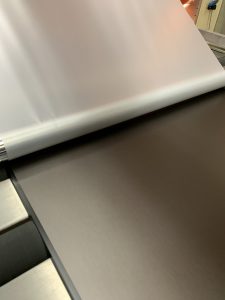There are several options available in regards to laminating paper/foil structures. This includes wax and glue lamination. These two do serve the same purpose, which is applying one substrate to another. Despite this, both carry distinct properties that can make or break a decent wrap. To help you understand, we’re going to discuss the two in detail here. Then, if you need laminating services, you can rely on us.
Glue lamination
 This is the most common technique employed by businesses and the whole industry. They laminate foil or film to paper with it in most cases. One glue that sees a lot of use for food packaging is a water-based acrylic adhesive that is customised for corrosion resistance. It works to better protect the products that get wrapped up in the material.
This is the most common technique employed by businesses and the whole industry. They laminate foil or film to paper with it in most cases. One glue that sees a lot of use for food packaging is a water-based acrylic adhesive that is customised for corrosion resistance. It works to better protect the products that get wrapped up in the material.
There is an explanation for glue lamination’s popularity. It originates from the economic advantages on offer. On a per pound basis, glues are a tad more costly than waxes. During the lamination process though, it takes near 50% more wax to obtain the same bond with glue. In the end, people find that wax lamination is often more costly.
Looking past the economic advantages glue lamination offers, there are performance ones too. At its core, glue is stronger than wax. Moreover, you can easily modify it to supply a destructive bond.
Aside from the strength, glue comes with post-lamination benefits. This is when it comes to product environment conditions. When there is extreme heat, the bond from your glue will hold longer than a wax adhesive of equal strength. If you would like to use our laminating services, feel free to contact us.
Wax lamination
This is the alternative solution to glue lamination. Originally, we used wax to supply a structure with superior dead fold. Once it is dry, it doesn’t hold memory. Also, it will form to a new shape with minimal resistance. Due to this fact, wax is a popular solution for wrapping objects with sharp edges. An example would be chocolate bars. It will hold onto the wrap’s rigid corners more tightly.
There are other advantages of wax-based adhesives. One is generating a bond with superior resistance to water. Also, you can modify it to meet the necessary standards more easily. One other advantage is the faster curing during the lamination procedure.
A vital pitfall to draw attention to when using wax lamination is that it can become vulnerable to heat during production. The standard wax can have a softening temperature as low as 140-180ºF. Thus, it can potentially delaminate if you store it in such conditions long term.
There is one last benefit to discuss that’s rather interesting. By using wax laminating agents, you can modify with ease. As opposed to glue-based adhesives, you can blend individual waxes together to combine the characteristics. So, you are able to begin with a paraffin wax and merge it with a microcrystalline wax. The first is cost efficient and possesses better hardness. The latter has higher adhesion.
Two great options
In the end, wax and glue adhesives serve as fantastic laminating options when bonding foil or film to paper. When picking between the two for your project, you should consider all the factors. This includes resistances, dead fold attributes, final storage conditions, and bond strength. If you are unsure of anything, you can seek help from the experts.
We know our capabilities if you need laminating services
At Foiling Services, we understand all the ins and outs of the lamination process. That is why the results from our services are consistently great. Also, we understand everything enough to know that this won’t always be the best choice. In the event it wouldn’t be suitable, we will advise you on alternatives.
Laminating services are excellent for all kinds of projects. So, please let us know if there is anything we can do for you.
